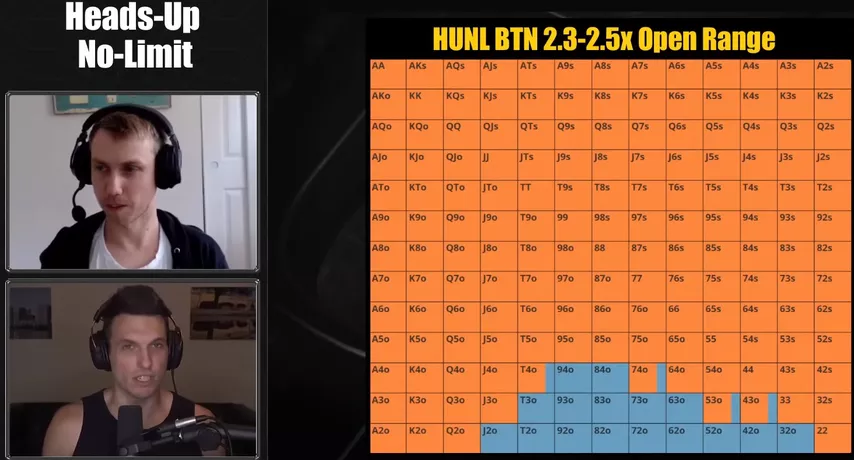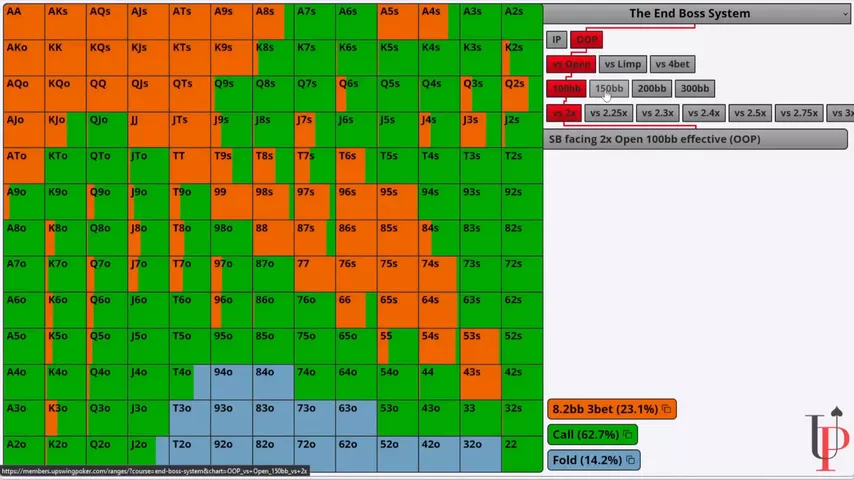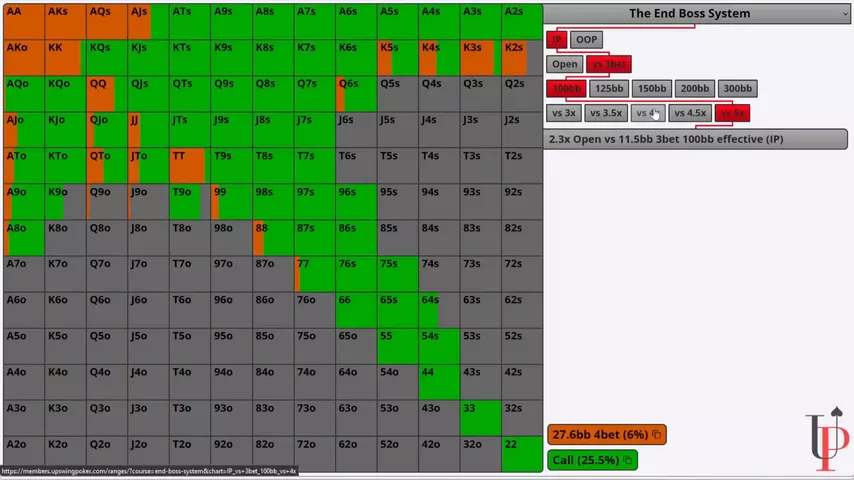Mike Brady: Welcome to our show that helps you become a better poker player. My name is Mike Brady, and our guest is three-time World Series bracelet winner and one of the most decorated heads-up players in poker history, Doug Polk.
Doug Polk: Thanks for having me! It's nice to finally be on the podcast. I hope I can help listeners understand one-on-one play.
MB: In HU NL the game is fast-paced and has a lot of action. For maximum winrate, you need to play loose and aggressively, but the aggression must be targeted so that we don’t start giving money to our opponents. Whether you play heads-up or not, our conversation today will improve your understanding of poker in general.
A great example of this is Doug himself, who has had great success in other Hold'em formats, but his understanding of the game is built almost entirely on his ability to play heads-up. It's also worth remembering Dan Ott: he bought Doug's first course in 2017 and won $4.7 million in the World Series main event. He stated that he would not have been able to get this far were it not for the ideas in that course.
Doug and his longtime heads-up coach Fabian Adler have just released a new course, The End Boss System. Can you tell our listeners about it?
DP: We recorded it in a few months and put all the concepts we've learned over the past few years into an easy to use format that anyone can learn to play HU NL at an absolutely top level.
Many years ago, when I was rising to become one of the best players in the world, no one knew the answers to many of the complex questions in poker theory. Thanks to the development of software, these answers have appeared today. The total duration of our course is approximately 50 hours, including additional materials on playing with a deep stack.

MB: Well, let's start with the basics. My first question is about preflop strategy, first on the button, then in the big blind. There are only two positions, so it shouldn’t be difficult to figure out the whole tree. Then we'll move on to postflop play. Let's go!
Let's say we're playing heads-up with an effective stack of 100 big blinds. What should the button's strategy be?
DP: The optimal opening range from the small blind is 84% of hands. Some open a little wider, some a little narrower. In any case, you will have to play all pairs and all suited hands. You can think about folding with offsuit garbage like , . The cutoff line runs approximately along , , . All offsuit deuces from and below you can throw it away. Some of the offsuit threes too. Almost everything else is already more or less playable.
In 100bb stacks, the optimal raise sizing is 2.25bb. As the depth increases, the sizing should also increase.
MB: So the adjustment to deeper stacks is a slight increase in the size of the open raise. Does a deep stack affect the choice of starting hands, or does the range remain more or less the same?
DP: There are a couple of minor adjustments, but the most important one is increasing the sizing. We can add a couple of combinations since with increasing depth it becomes harder for the big blind to fight our opens. But you don’t have to do this and continue to play the same 84% of hands; the waiting losses will be so insignificant that you won’t notice it. Therefore, I recommend that almost all players stick to the standard 100bb range and only change the raise size.

MB: When you played the match against Daniel Negreanu, I noticed that you increased your raise size in deep stacks while in position, but decreased your 3-bet size when out of position. Can you explain the concept behind this decision?
DP: Great topic, thanks for asking! In my opinion, many players understand it incorrectly. For many years, the prevailing view among regulars was that when playing deep out of position, you should 3-bet larger and with a tighter range to hurt your opponent's pot odds and thereby make it more difficult for him to call with suited connectors, offsuit broadways, and even small pairs. With the advent of solvers, it became clear that this strategy was fundamentally flawed. The thing is that as depth increases, the player in position always begins to win more pots. Therefore, it is more profitable for a player in position to raise larger, and vice versa for his opponent.
There is one more important point that I would like to touch upon. I already said that you need to increase your open raise size, but the same goes for your 4-bet size. At 100bb depth, we are usually happy with a 4-bet of around 2.7x. Essentially, this is the size at which we can afford to 4-bet fold. As the depth increases, the 4-bet can go up to 3x – three times the 3-bet. So position-based sizing adjustments work for open raises, 3-bet, 4-bet, and even 5-bet when stacks get particularly deep.
MB: I'm scared to even think about playing in such depth. Okay, let's now move on to the strategy of the big blind in response to a raise. Let's say the button, as you advise, opened with the optimal size of 2.25 bb. How should we respond?
DP: Against small sizes, we should defend wider, against larger sizes narrower, this is the basic theory. Against 2.25bb, our range of defense is quite wide and covers about 70-75% of hands. However, I rarely encounter 2.25bb raises because I play live, where everyone raises 2.5bb, like real poker players. That's why I haven't updated my memory on the ranges for 2.25bb for a long time.
As for the 3-bet range, it remains virtually the same for any size.
MB: Okay. Let's stick to the 2.5bb open since you remember it better. What hands are in your 3-bet range?
DP: Mid and high pocket pairs always 3-bet. As we go down, I'm talking about pairs from sixes and below, 3-betting made less and less. With deuces, you can only make calls. We are talking about 100bb; in deep depth, 3-bet with all pairs.
Of course, they really like to 3-bet suited hands, especially from the middle part of the matrix, like 86s, T7s, and even 75s. The idea is that we can happily fold them to 4-bet... no, not happily, of course, we will still be sad, but at least we won't hate life. Unlike hands like J9s, T9s: this will surprise many, but with them, we do not 3-bet much more often, but call. It seems very strange not to 3-bet a strong hand like T9s when playing heads-up, but the point here, as I said, is the risk of getting 4-bet. We will be dominated not only by our opponent’s value hands, but even by his bluffs like ATo, QJo. Therefore, our 3-betting range should be slightly polarized.
The same goes for offsuit hands. With KTo, QJo, QTo we very, very rarely 3-bet. But AJo is already an excellent hand for 3-betting. And when we get lower into JTo territory, T9o is also a good 3-bet. Polarization again!
In general, as a rule, our calls start with the weakest hands and end with quite strong ones, and 3-bet bets are placed in opposite directions, but always with hands that are playable postflop.
MB: You just described a rather interesting range! I'm talking about the core of the bluff portion of a 3-bet – T7s, 86s, and so on. This reminds me a lot of the 3-betting range from the big blind in an MTT about 50bb deep. This is exactly how it should be played! The computer will always call with T9s, J9s, or QJs because getting 4-bet with these hands will be a disaster for us. But there is no problem playing raise-fold with T7s.
There is such a parallel between a 100bb cash game and a 50bb MTT. I wonder what this is connected with.
DP: Quite interesting indeed. It all comes down to a fundamental principle, correctly applying it is one of the most difficult tasks in poker: play as aggressively as possible, but at the same time suffer as little as possible from counter-aggression with good, but not very strong hands. We want to put pressure on the opponent with them, but not cross a certain line. If you go too far, you will have to suffer, throwing away a very good hand before the flop.
Of course, we shouldn’t constantly be afraid of the hypothetical possibility of getting a raise from our opponent, because then we won’t be able to play aggressively without a monster at all, but it’s still worth keeping it in mind. We will return to this thought on every street and postflop too.
MB: Sounds very logical. I think this is a great example of how heads-up work can improve your understanding of poker in general, clarifying the mechanics of the game and concepts that are equally applicable to many variations of poker.
I'm sure you've had similar epiphanies in tournaments or full-table cash games.
DP: Of course. The most common example is that when defending the big blind in tournaments, we must play a very wide range, especially against min raises from late positions. Getting into the habit of playing a bunch of garbage hands against loose steals helps a lot in these situations.
When I moved into tournaments from heads-up, I was fortunate to have success in almost every type of tournament I encountered online. The results were not even affected by whether I streamed my game or not. I think one of the main reasons why it was so easy for me was that I confidently selected hands for bluffs, draws, bets to defend and call downs from a very wide range of candidates. I think this is one of the main facets of poker skill in general, and heads-up helps to polish it.
MB: Okay, anyway, let's get back to defending the big blind against a raise! Let your opponent raise 2.5bb. How will we adjust in stacks deeper than 100bb? You already said about reducing the size of the 3-bet, what else?
DP: Specifically preflop, the 3-bet sizing should decrease as depth increases, but the range also changes a little. We almost stop 3-betting hands like , , . From time to time it is possible, but the main action with them is to call. 3-bet much less often , .
The general rule is that we move away from offsuit hands with good fold equity against our opponent's range, which often flops top pair, towards suited hands, suited aces with a card to the wheel, etc. We are interested in playable hands with the ability to hit the nuts and play a huge bank. And the total number of suitable hands for 3-betting, as you might guess, is becoming smaller. In deep stacks, we 3-bet less often!
MB: It seems pretty simple: conditions get worse for the player out of position, so he puts less money into the pot and does so a little less often. Elementary!
DP: Who would have thought, right?
MB: Yeah. Okay, here's my last preflop question. We raised on the button and got a 3-bet from the big blind. What types of hands do we want to call and which ones are better to 4-bet with? Let's start at the standard depth of 100bb.
DP: We will have to play quite disciplined, because the size of the 3-bet in theory should be large, and the stack that we can take from our opponent in case of a good hit is limited.
It's funny, but at this point in my career I almost never play 100bb deep. When I started playing heads-up online, things were different. In general, 100bb requires discipline from us first of all. Small pockets mean a very confident and happy call. Suited connectors also mostly call. This is an interesting category because in deep stacks hands like 98s become promising 4-bet options, but without depth, we are too scared to fold them to a shove.
So we're more than happy to call. Our main 4-bet bluffs are offsuit broadways: ATo, KQo, QTo, JTo. K2s, and K3s are also excellent candidates, as well as Q5s, Q6s. It is interesting to note that AQo often sneaks into a 4-bet fold, but I don’t remember exactly, already at 100 bb or a little deeper. I need to check the charts, after all, I haven’t played with such stacks for a very long time.
The point here is that AQo is a mixed value bluff. We dominate the range that calls 4-bet, and we have strong blockers that affect our opponent's pushing frequency, and that's enough.
From time to time, you can add A9o, A5o, and individual suited hands to 4-bet at the lower end of the calling range.
MB: Perhaps this is all that can be said about preflop when playing heads-up. I will add that many hands are played using a mixed strategy because it is very important to maintain balance and hit different textures approximately equally.
For The End Boss System course, Doug and Fabian prepared many charts for different stack depths, with their help you can figure out the questions that Doug could not remember the answers to today.


The ending will come later.


















